Today’s Word of the Day is “coacervate”. For the 95% (including everyone at We Heart) who don’t already know, that is from the Latin “to assemble together, to cluster” and is latterly used as a noun to describe droplets of organic molecules pushed together by their common aversion to the surrounding water, but which allow selective absorption across the boundary – a kind of primitive metabolism. You never stop learning with We Heart, eh readers? It’s a process that forms some origin of life theories such as that of post-Darwinist Alexander Oparin, who proposes that there is no fundamental difference between living and non-living material.
All of which brings us to the work of Japanese artist Masakatsu Sashie, who extrapolates the molecular theories to macro levels. He imagines the world in which there is no distinction between the natural world and the man-made, where massive assemblages far exceed the functionality of their component parts, and where there is beauty to be found even in landfill sites and appliance wastelands. Sashie’s collection Coacervate is currently on display at Jonathan LeVine Gallery, New York, and will remain there until 16 November.
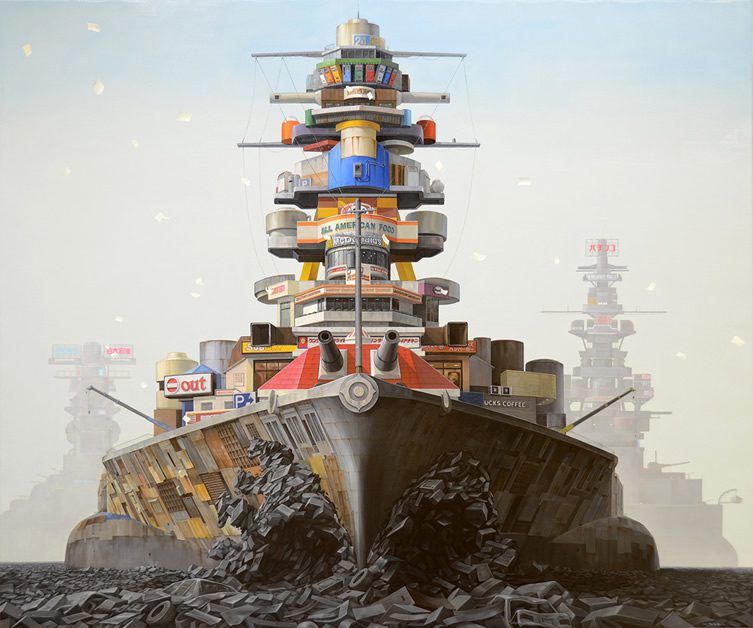
Masakatsu Sashie
Parade
oil on canvas
63.78 x 76.37 inches
(162 x 194 cm)
64.63 x 76.38 x 2 inches, framed
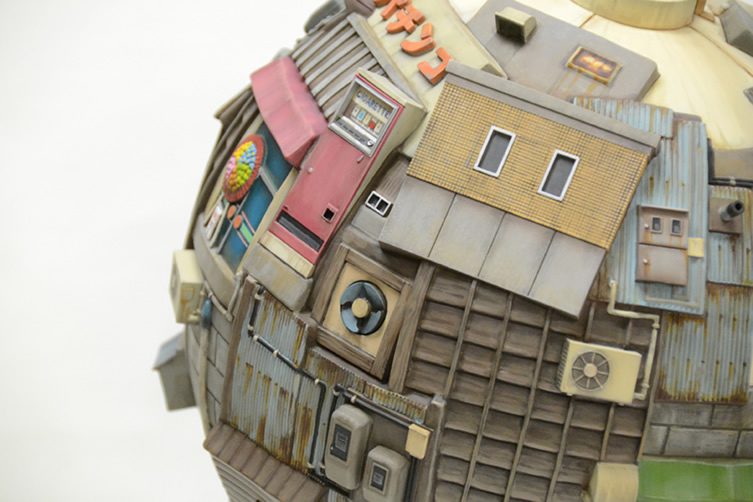
Masakatsu Sashie
Territorial Globe (detail)
resin, lacquer, enamel, acrylic, brass, copper and stainless
16.54 x 29.53 x 1.57 inches
(42 x 75 x 4 cm)
#1 in a series of 20 unique hand painted variables
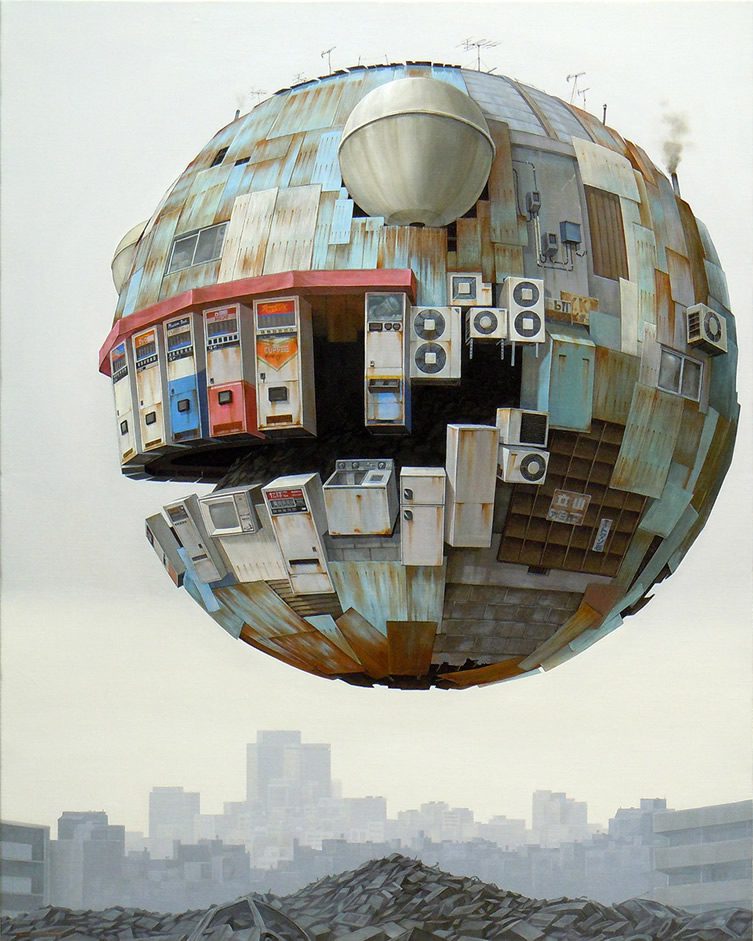
Masakatsu Sashie
Coacervation
oil on canvas
35.83 x 28.62 inches
(91 x 72.2 cm)
35.63 x 29.5 inches, framed
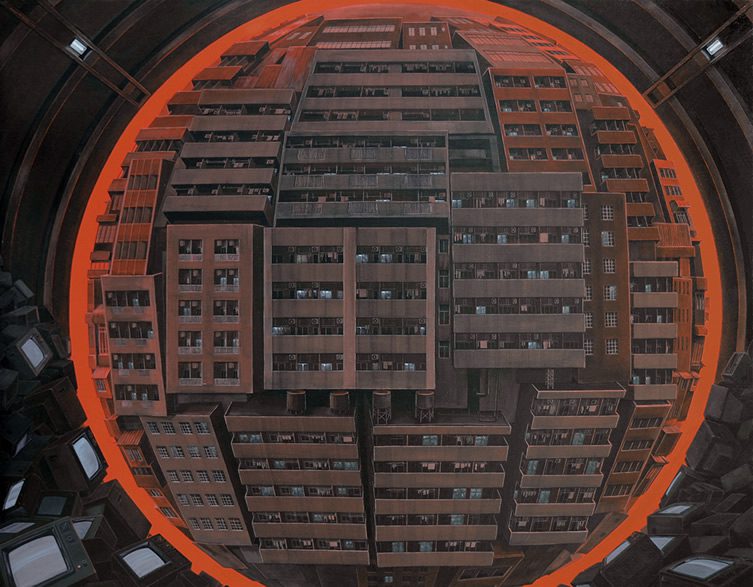
Masakatsu Sashie
Nest
oil on canvas
45.94 x 35.83 inches
(116.7 x 91 cm)
36.88 x 46.88 x 2 inches, framed
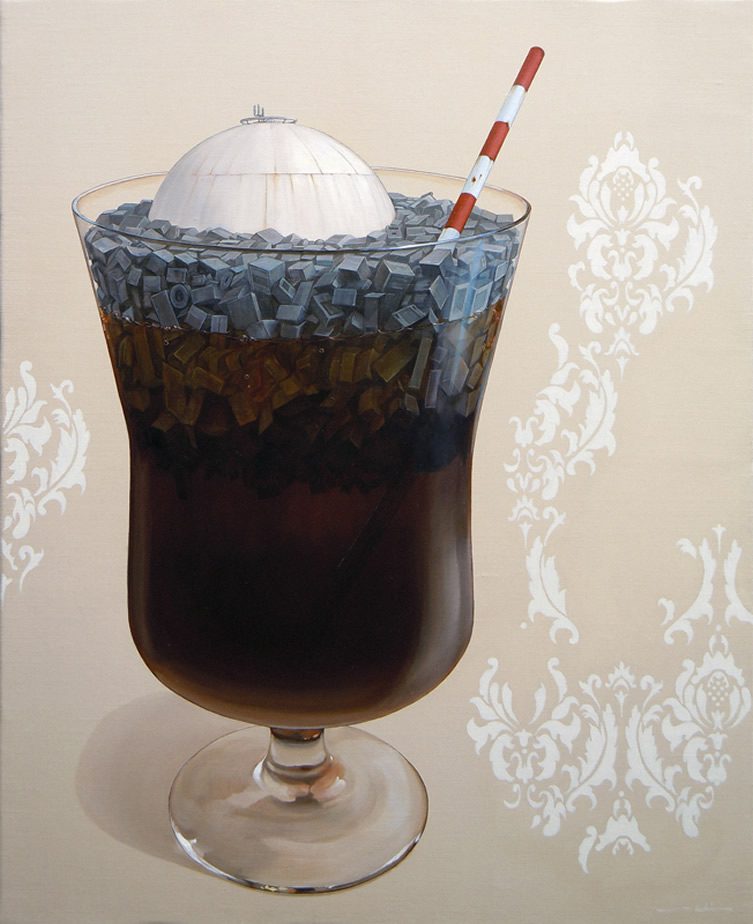
Masakatsu Sashie
Float
oil on canvas
25.6 x 20.8 inches
(65.2 x 53 cm)
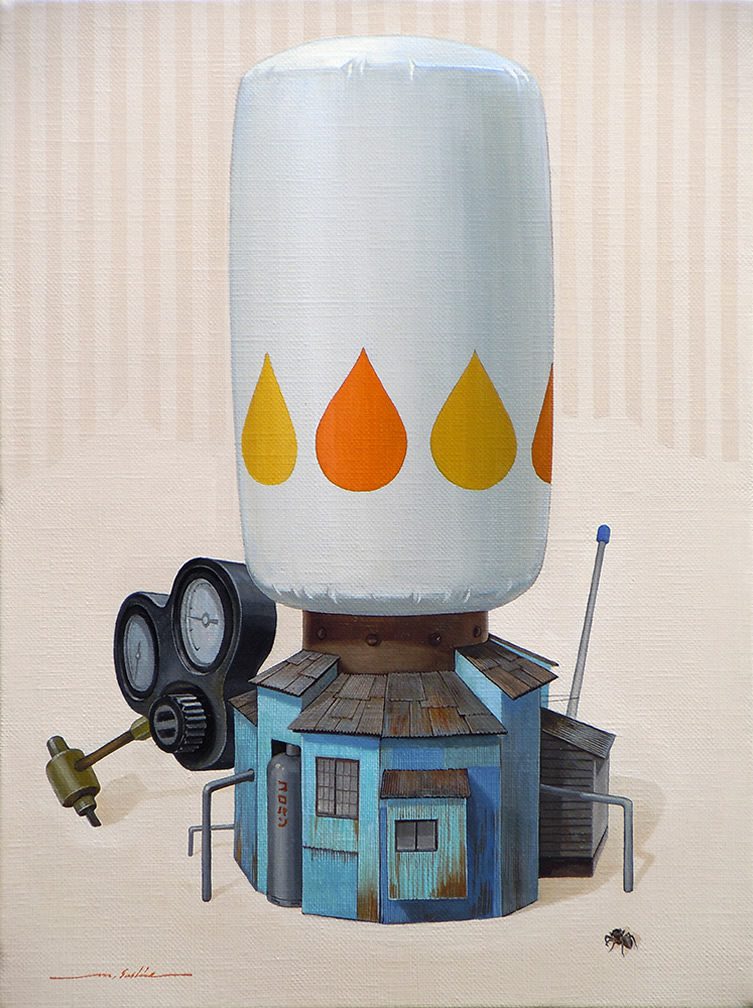
Masakatsu Sashie
Bug
oil on canvas
13.1 x 9.5 inches
(33.3 x 24.2 cm)








